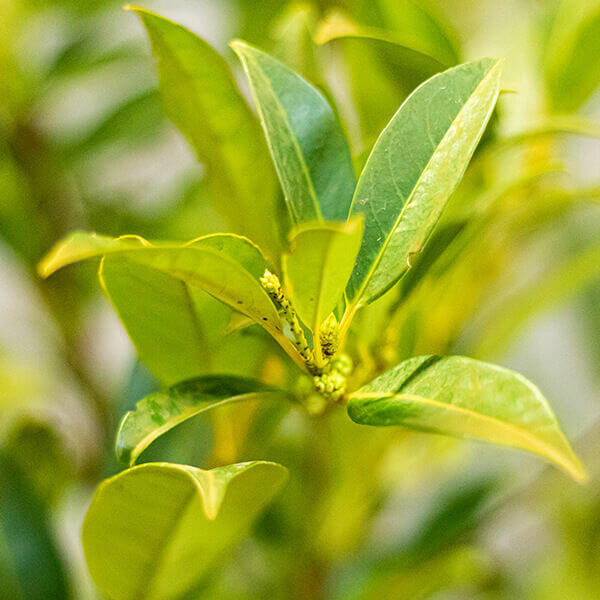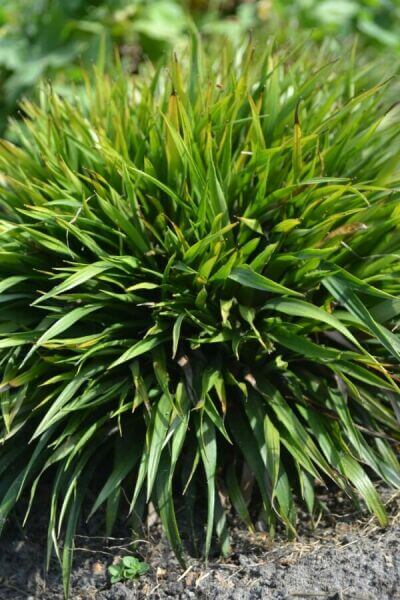Best Hedging Plants For Garden Sculptures
Best Hedging Plants For Garden Sculptures
Blog Article
Hedge Plants For Screening Neighbors
Improve your garden's appeal with lush hedge varieties such as Yew (Taxus), Thuja, Laurel, Photinia, and Bamboo, celebrated for their structural integrity and ecological benefits.
Yew and Thuja provide evergreen protection and winter season resilience, while Laurel provides rapid development and broad, fragrant leaves.
Photinia adds seasonal beauty with its vibrant red foliage, and Bamboo provides a low-maintenance, serene atmosphere.
These hedges enhance air quality, reduce noise, and produce tranquil, personal areas.
Proper planting, spacing, and upkeep guarantee energetic development and eco-friendly harmony.
Explore how these lavish varieties can elevate your garden's appeal and wellness.
Key Takeaways
Transform Your Garden With Lush Hedge Varieties
- Select Yew for its dense, evergreen development and unparalleled durability.
- Go with Laurel for its fast growth and broad leaves, ensuring quick privacy.
- Select Photinia for its lively seasonal foliage, which turns a striking dark red.
- Make use of Bamboo for a low-maintenance, winter-hardy hedge with visual appeal.
- Area plants 2-3 per meter and prune regularly for optimal growth and health.
Popular Hedge Plants
When transforming a garden with lush hedge varieties, it's important to think about popular hedge plants such as Yew, Thuja, Laurel, and Photinia due to their special attributes and benefits.
Yew (Taxus) is highly esteemed for its longevity and thick, green growth, making it a prime option for withstanding landscapes.
Thuja is kept in mind for its evergreen foliage and robust winter season strength.
Photinia includes seasonal vibrancy with red leaves that darken gradually, developing vibrant visual appeal.
Laurel uses quick development and aromatic, broad leaves, suitable for fast privacy.
Additionally, Bamboo is an excellent choice for atmosphere, using a low-maintenance, winter-hardy option that enhances the garden's visual with its classy, swaying walking sticks.
These choices deal with a range of horticultural needs and preferences.
Advantages of Garden Hedges
Garden hedges provide a wide range of benefits, making them a valuable addition to any landscape. These natural barriers are cost-effective to carry out and offer substantial wind security, enhancing air blood circulation and adding to noise reduction. The thick foliage of hedges like Thuja and Beech guarantees privacy by blocking exposure, developing a tranquil and secluded environment.
Hedges likewise play an essential role in microclimate regulation, supplying a steady environment that promotes plant growth and lessens temperature level changes. Their elaborate leaf structures filter toxins, improving air quality and adding to a healthier garden environment.
Furthermore, hedges master noise decrease, taking in and deflecting sound waves to lower ambient sound levels. This dual functionality of offering both visual and acoustic personal privacy boosts the general serenity and visual appeal of any garden.
Planting and Maintenance Tips
For a successful hedge, precise preparation of the planting area is important. Make sure the soil has correct pH and drain to support strong root advancement.
Space the plants properly for the chosen types. Water the hedge frequently during its preliminary growth phase, changing as required with seasonal changes.
Implement a methodical bug control and disease prevention technique, utilizing natural or chemical treatments when required. Routinely check for aphids, mites, and fungal infections.
Apply mulch to maintain moisture and reduce weeds. Seasonal pruning promotes dense development and air blood circulation, necessary for plant health.
Following these guidelines will help you cultivate a lively, well-maintained hedge that improves the appeal of your garden.
Spacing and Cutting Standards
Spacing and Cutting Guidelines
Proper spacing and trimming are essential for cultivating healthy, aesthetically appealing hedges. Appropriate spacing makes sure each plant gets enough nutrients, light, and air flow.
Follow these standards for optimum hedge upkeep:
- Spacing: Position hedge plants 2-3 plants per meter to motivate robust development.
- Pruning Strategies: Routine pruning is vital for keeping preferred hedge height and shape. Cut brand-new development in summer and cut back older wood during winter.
- Seasonal Care: Adjust trimming methods and schedules according to seasonal requirements to ensure plant health.
- Hedge Height: Regularly display and cut to keep the preferred hedge height and accomplish consistent aesthetics.
Sticking to these steps will ensure your hedge grows, boosting both the appeal and performance of your garden.
Choosing the Right Hedge
Picking the Right Hedge
Choosing the appropriate hedge includes assessing factors such as mature height, foliage density, and ecological durability. Successful hedge plant choice requires understanding each types' growth attributes and site-specific flexibility.
For example, Yew (Taxus) uses outstanding durability and thick growth, while Thuja is significant for its winter strength. Additionally, thinking about maintenance requirements is important; fast-growing types like Laurel or Privet demand regular cutting, whereas low-maintenance options like Bamboo or Ivy may be preferable for those looking for minimal maintenance.
Environmental elements such as soil type, light accessibility, and wetness conditions ought to likewise guide the choice procedure. This cautious technique ensures the selected hedges will grow, providing both visual and functional advantages to the garden landscape.
Delivery and Planting Guidance
To guarantee your hedge plants flourish, they must be provided by specialized couriers and planted without delay upon arrival.
Follow these essential actions for successful planting:
- Soil Preparation: Enhance the soil with natural matter to enhance drain and nutrient material.
- Planting Depth: Create a trench twice the width and equal to the depth of the root ball.
- Watering Methods: Water thoroughly after planting, keeping the soil consistently damp however not saturated.
- Mulching: Apply a layer of mulch to maintain wetness and reduce weeds.
Customer Support and Service
Given the essential function of prompt help in horticultural pursuits, our customer support team is offered six days a week through telephone, email, and social media to offer skilled suggestions and swiftly deal with any concerns. Their commitment to fast reaction times makes sure consumer fulfillment by solving questions connected to plant health, ideal planting techniques, and maintenance schedules.

Telephone
Six days a week
Within 24 hours
This detailed support system, reinforced by an outstanding 9.3/ 10 consumer rating, highlights our commitment to improving the gardening experience for each customer.
Regularly Asked Concerns
The Length Of Time Does It Consider Hedge Plants to Develop?
Hedge plants usually need one to 3 years to end up being fully established, with the exact duration varying by species and growing conditions.
Effective care throughout this important duration is necessary for robust growth. Constant watering, alert weed control, and proper fertilizer application are essential in promoting strong root advancement.
For instance, fast-growing species like Laurel may establish faster, while slower-growing varieties such as Yew may take longer. Thorough upkeep speeds up the establishment procedure, leading to thick and healthy hedges.
What Are the very best Hedge Plants for Privacy?
The question of the very best hedge plants for personal privacy involves assessing evergreen and deciduous options.
Evergreen hedges like Thuja, Laurel, and Cypress provide year-round protection, guaranteeing continuous privacy.
On the other hand, deciduous hedges such as Beech provide seasonal privacy, shedding leaves in cooler months.
Key maintenance pointers for privacy hedges include routine trimming, fertilizing in spring, and proper spacing-- normally 2 to 3 plants per meter.
Furthermore, consistent watering and thorough weed removal are crucial for promoting healthy, thick growth.
Can Hedge Plants Bring In Wildlife to My Garden?
Yes, hedge plants can draw in wildlife to your garden by supplying vital benefits like shelter, food, and nesting websites, thereby boosting local biodiversity. Yew, holly, and laurel are outstanding for bring in birds, while ivy supports a variety of pests.
However, it is very important to note that there are some downsides, such as increased maintenance to handle pests and routine maintenance. Carefully picking and maintaining hedge varieties can assist balance these advantages and downsides, eventually fostering a sustainable and vibrant community in your garden.
Exist Any Blooming Hedge Plants Available?
Yes, there are flowering hedge plants available that can improve the appeal of your garden.
For example, Elaeagnus, also referred to as Olive Willow, produces aromatic white flowers in the fall, including a touch of elegance.
Photinia, another popular choice, showcases dynamic red leaves that grow into an abundant green, creating a dynamic visual result throughout the seasons.
To ensure these plants grow, it's necessary to practice appropriate pruning techniques and seasonal upkeep, such as cutting new growth in the summertime and cutting down in the winter.
These procedures will help keep the health and visual appeal of your flowering hedges.
How Do I Avoid Pests in My Hedge Plants?
To prevent bugs in hedge plants, employ Browse this site natural insect control methods and preserve correct hedge care. Introduce useful pests like ladybugs, which prey on hazardous pests, to produce a well balanced environment.
Regularly examine your hedges for signs of invasion and quickly eliminate any afflicted parts to avoid the spread. Make sure the health of your hedges by applying balanced fertilizers and providing adequate water.
Use mulching to keep soil wetness and correct spacing to lower plant tension and promote robust development. These practices jointly assist in minimizing pest issues and maintaining a healthy hedge.
Conclusion
In essence, selecting the right hedge varieties such as Yew, Thuja, and Laurel can transform any garden into a tranquil haven. These plants supply year-round plant, enhance visual appeal, and deal useful advantages like noise reduction and wind defense.
Proper planting techniques, accurate spacing, constant watering, and seasonal cutting are essential for optimum development.
Dependable delivery services and skilled customer support make sure a smooth experience from purchase to planting, making it simpler than ever to raise your outside space.
Garden hedges use a plethora of advantages, making them an important addition to any landscape. These natural barriers are economical to implement and supply considerable wind protection, boosting air flow and contributing to noise decrease. The dense foliage of hedges like Thuja and Beech guarantees privacy by blocking visibility, producing a serene and remote environment.

Pruning Strategies: Routine pruning is necessary for keeping preferred hedge height and shape. Cut brand-new development in summer and cut back older wood throughout winter.
Report this page